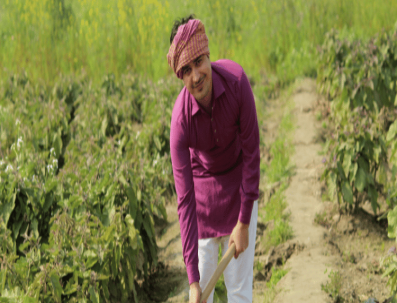
Rebuilding The Youth of Rural India with CSR
The rural sector of the country is the backbone of our economy. India is home to a fifth of the world's youth with a population of 1.3 billion, more than 50% of its population below the age of 25 and more than 65% below the age of 35.
The country's young population is its most valuable asset and most pressing challenge at the same time. India has the benefit of a unique demographic. But if we don’t use this opportunity well, we can lose progress in human development.
Despite the rise of urbanization more than half of India’s population is projected to be rural by 2050. According to the World Economic Forum, on average, an Indian worker today needs about 100 days for reskilling to be ready for future jobs. India is a goldmine of raw talent, waiting to be nurtured, developed, and added to the growing human resource pool. Thus, the growth and development of the rural economy and population are key to the overall growth and inclusive development of the country.
However, the government’s efforts to grow the rural economy and the change are slow for reasons of poor acceptance by people, poor policy implementation and lack of coherent thinking among stakeholders.
But with the help of some good government policies and Corporate Social Responsibility, we can attain development in rural parts of the country as well.
Scope of CSR
With the current opportunity of huge funding in the form of social investment by corporates, a change can be made if the proper investment policy is envisaged. Corporate social investments in rural areas can be in the form of skill development and livelihood.
- Agriculture, which is the backbone of rural development, needs a lot of support to increase farm income. Youth living in rural India can be updated with knowledge on improved agricultural practices and cultivating high-value crops to enhance farm income and on-farm employment.
- Establishing small-scale industries and village-based industries which can employ major rural youth populations can also boost employment.
- Rural youth have to be equipped with new skills to be able to have a sustainable livelihood adapting to emerging trends. Remote education is the new normal but internet connectivity, availability of devices, learning platforms, and the preparedness of instructors and learners are some of the key challenges that need to be addressed in rural India.
- One of the major challenges affecting the efficiency of this skill development program is the lack of awareness around the opportunities, and numerous government skilling initiatives. Different stakeholders including NGOs, the government, and the corporate sector can come together to address the need for competency-based skill-oriented training and placement.
- Training rural women in value addition to the farm produce and creating market avenues will help in addressing gender issues in rural areas. Encouraging young girls to help out in the family business.
- Encouraging young minds in rural areas to start something of their own and use the internet to sell or market their products. They can use the internet in the local language and offer a village-to-consumer-supply chain creating better income levels. For entrepreneurial success, people need to be plugged into broader market trends.
- Investments in infrastructure are extremely necessary to provide urban facilities in rural areas and prevent urban migration in search of livelihood.
- There are many factors which hinder the skill development of youth in rural areas and their progress. Hence, proper planning and government policy need to be framed and legal policies should be made.
The impact of corporate India and the government of India together to produce a more skilled and employable rural workforce will drive national growth and will be also helpful to break the cycle of poverty.
Check out some of our skilling projects in rural India.





